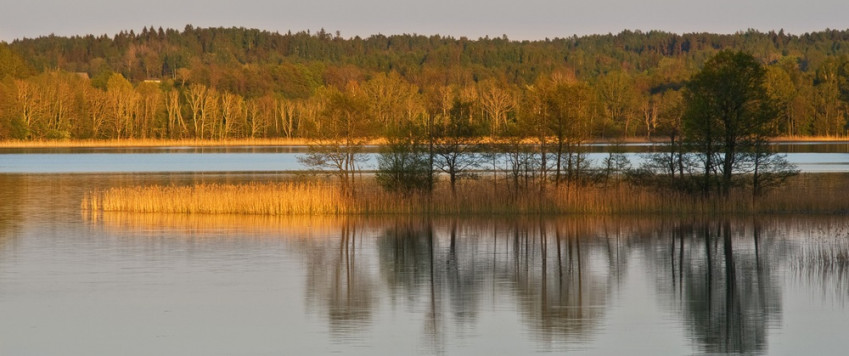Advantages of Regions
For Latvijas Banka Monthly Newsletter, In Focus, April, 2018

The territory of Latvia is not large; however, it is diverse enough to allow for regional development using different historical and natural advantages – the land, sea, airspace, architecture inspired by various periods of history, industrial clusters and significant buildings such as hydroelectric power stations. Although regional inequality is high in terms of socio-economic indicators, each region has its strengths that may be of interest to investors or tourists.
Even though Latgale is the region with the lowest economic activity, tourists can find it a nice place to go to get away from the city noise and heated asphalt. The diverse landscape and the large number of lakes, rivers and protected areas with unique flora and fauna are excellent tourist destinations. The territory is crossed by two cross-border highways and three railway routes; thus there are logistics centres in Daugavpils and Rēzekne. The region can be proud of powerful metalworking, machinery and food processing companies. To promote entrepreneurship in the region, advantages are provided by two special economic zones: Rēzekne SEZ and Latgale SEZ.
Vidzeme is the most forested region in Latvia, with competitive forestry and wood industry companies. It has a well-developed dairy farming industry, which is growing rapidly. Several manufacturers of building materials contribute significantly to the added value of this region.
Zemgale has very fertile soil and agriculture plays an important role there. Consequently, several grain producers, processors and merchants are among the companies with the highest turnover. Despite smaller areas of pasture land, the region records high livestock and poultry indicators. Zemgale also accounts for the highest share of the mining industry and can be proud of geothermal waters, gypsum, peat, dolomite, limestone, sand, gravel and clay.
Kurzeme has the longest sea border with two important ports in the cities of Liepāja and Ventspils as well as three small harbours. That's why the region is rich in fishing industry traditions and has a developed transportation and storage services sector. Kurzeme is one of the most forested regions, with forestry and wood industry playing an important role. The Free Port of Ventspils and Liepāja SEZ offer advantages to facilitate entrepreneurial activities. The region has also several metalworking and machinery companies that have been developed both historically and through launching new production units. Historically, Liepāja has evolved into the centre of lingerie manufacturers.
Speaking of Rīga's vicinity airspace is a significant contributor to the added value, along with such resources as agricultural land, forest and water areas. The SJSC Riga International Airport and several aviation companies are registered in Mārupe Municipality. The manufacture of building materials, chemical and pharmaceutical industries, light industry, metalworking and wood industry contribute to its added value significantly. Sigulda and Jūrmala can certainly be mentioned as the places especially loved by tourists.
Latvia's capital Rīga is the country's trade and transport hub with a crossover point of railway infrastructure and the Free Port of Riga. Financial service providers and real estate developers likewise concentrate here. As to manufacturing industries, one can single out the manufacture of food, metal products and electronic equipment. The capital also accounts for the highest share of information and communication services. The city's added value per capita is higher than that of other regions; moreover, this difference has increased from two times to three times within the last five years. Rīga is and will most likely remain the country's centre with high economic activity.
Textual error
«… …»


